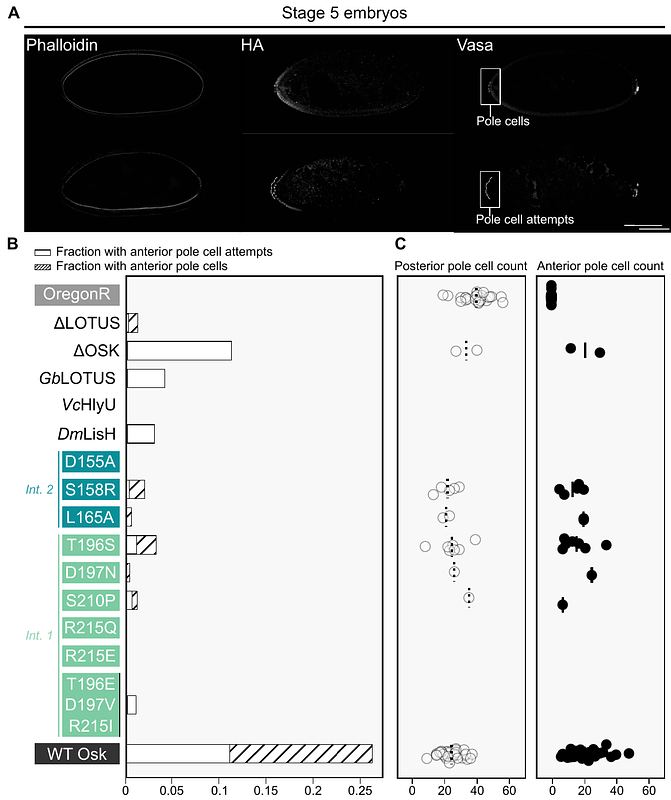The LOTUS domain of Oskar promotes localisation of both protein and mRNA components of Drosophila germ plasm

The LOTUS domain of Oskar promotes localisation of both protein and mRNA components of Drosophila germ plasm
Repouliou, A.; Srouji, J. R.; Rivard, E. L.; Leschziner, A.; Extavour, C. G.
AbstractGerm cells transmit genetic information to the next generation in multicellular organisms. In Drosophila melanogaster, germ cells are determined by germ plasm, a specialised cytoplasm assembled by the Oskar protein. The current view of the molecular mechanism of germ plasm assembly attributes recruitment of protein and mRNA germ plasm components to distinct domains of the Oskar protein, called the LOTUS and OSK domains respectively. However, most evidence for this model is based on in vitro studies. Here we test the ability of Oskar variants to assemble functional germ plasm in vivo. We found that Vasa recruitment was largely unperturbed by LOTUS deletion or mutations in vivo. In contrast, nanos and pgc mRNA recruitment was affected by LOTUS domain perturbations, despite the current model attributing mRNA recruitment to the distinct OSK domain. Taken together, these data suggest a revision of the prevailing modular view of Oskar\'s structure-function mechanism.